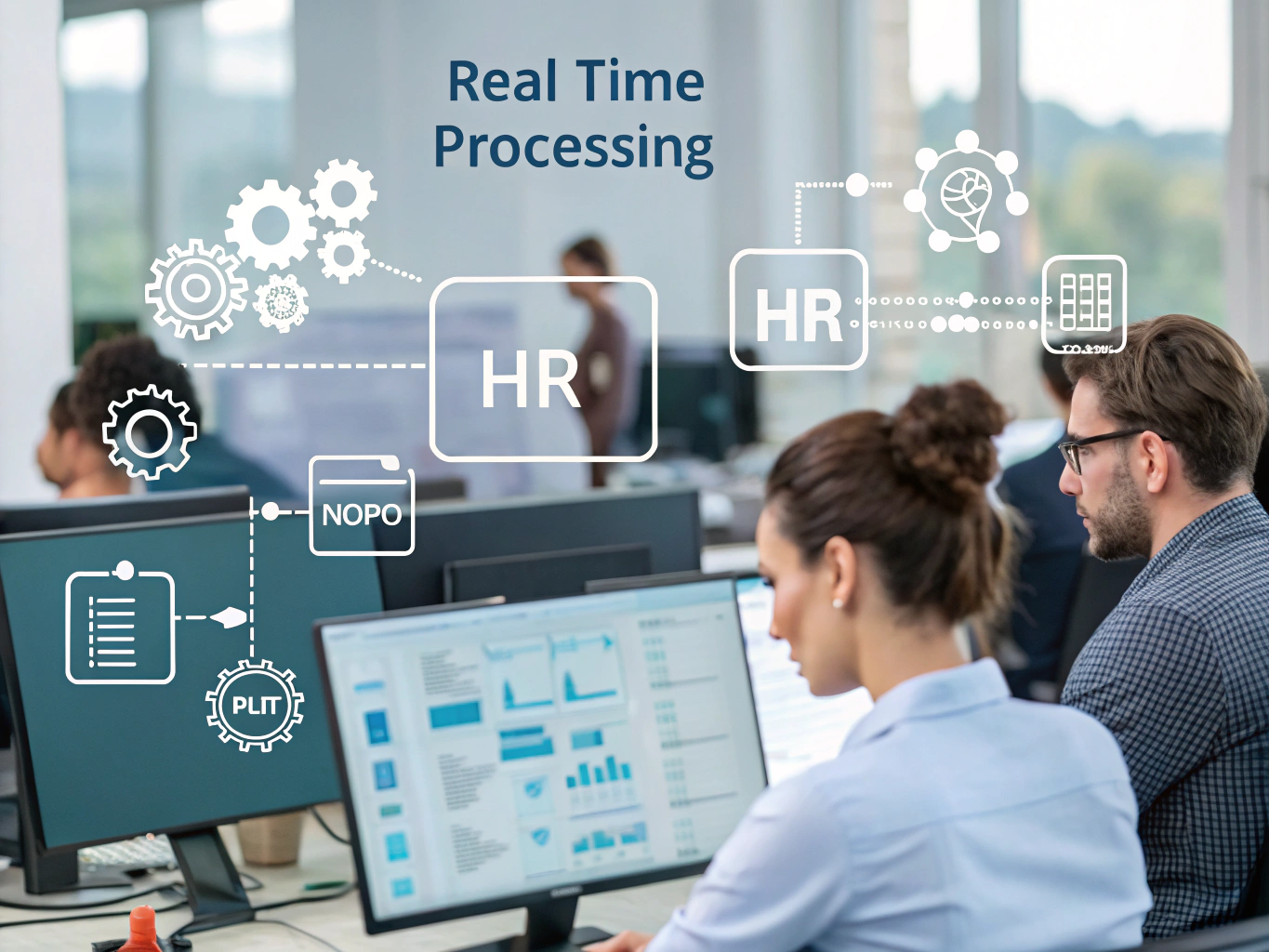Definition
Real Time Processing is the immediate and ongoing handling of data as it comes in, allowing your HR team to access and update information without delay. Imagine being able to track employee attendance, payroll, and performance metrics in the moment—this is what real-time processing brings to the table!
Key Components
Understanding real-time processing means diving into its core elements, which work together to enhance HR functionality. Here are some key components to consider:
- Instant Data Updates: Information like employee attendance and payroll figures get updated in real time, reducing discrepancies and ensuring everyone is on the same page.
- Data Integration: Real-time processing often involves integrating various HR systems (like payroll and performance management), enabling seamless data sharing across platforms.
- Immediate Feedback Mechanisms: With real-time processing, performance evaluations can be conducted on-the-fly, allowing managers to provide instant feedback to employees.
- Automated Alerts: Set up notifications for important events, like when an employee’s attendance is below the expected threshold, helping HR act quickly.
- Analytics and Reporting: Utilize dashboards that present real-time analytics, allowing HR professionals to make data-driven decisions swiftly.
Importance in the Workplace
Why does real-time processing matter? It’s all about efficiency and responsiveness. For example, imagine an HR manager named Sarah who receives a complaint about understaffing in a department. With real-time processing, Sarah can pull up attendance records immediately, see who’s available, and make staffing adjustments on the spot. This kind of agility is what keeps organizations running smoothly.
Additionally, consider a scenario where a company is offering performance bonuses. With real-time payroll updates, HR can immediately calculate and disburse these bonuses based on the latest performance metrics, keeping employees motivated and satisfied.
Best Practices
Implementing real-time processing effectively requires thoughtful planning and execution. Here are some best practices to help you get started:
- Choose the Right Technology: Invest in HR software that supports real-time processing. Look for solutions that integrate with your existing systems, ensuring a smooth transition.
- Train Your Team: Ensure that your HR staff understands how to use the systems. Provide ongoing training sessions that cover real-time processing features and best practices.
- Establish Clear Protocols: Define how and when data will be updated in real time. Create guidelines that specify responsibilities among team members to avoid confusion.
- Monitor Performance: Regularly assess the effectiveness of your real-time processing systems. Gather feedback from HR staff and employees to identify areas for improvement.
- Encourage Employee Self-Service: Enable employees to access their own information in real time. This can reduce the burden on HR and empower employees to take charge of their own data.
Legal Considerations
When implementing real-time processing, it’s essential to keep legal considerations in mind. Data privacy laws, like GDPR and HIPAA, require that sensitive employee information be handled with care. Make sure your systems comply with these regulations by implementing adequate security measures and policies. Always inform employees about how their data will be used and ensure their consent where necessary.
Conclusion
In a nutshell, understanding real-time processing can significantly elevate your HR practices. By embracing this technology, you can enhance decision-making, improve employee engagement, and streamline operations. So, whether you’re an HR professional looking to stay ahead or a job seeker wanting to understand modern HR practices, real-time processing is a crucial concept to grasp. Embrace it, and watch your workplace transform!




